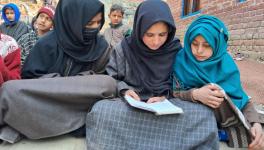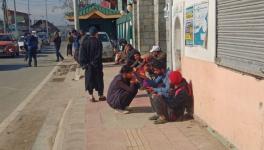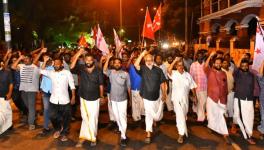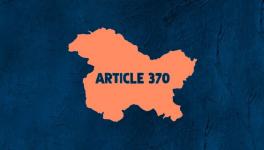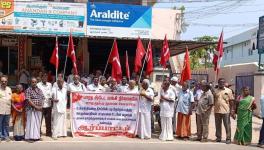J&K: When the Old Order Changeth
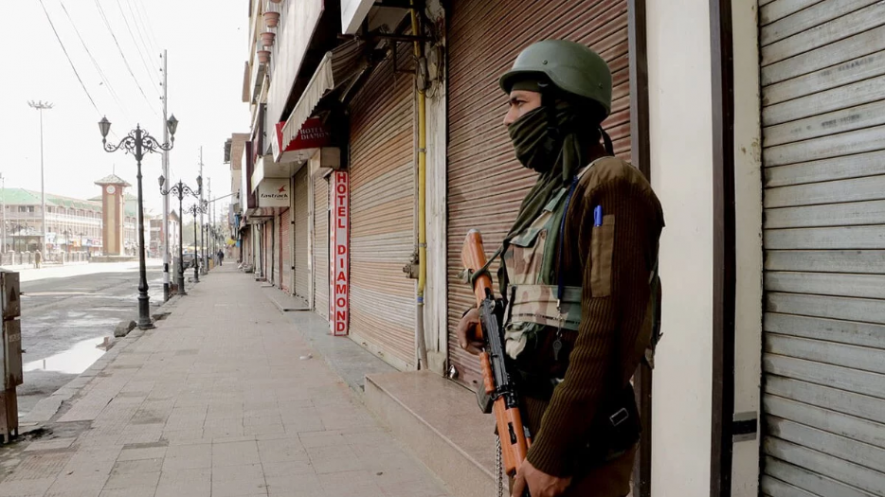
Any ideologically-driven disruption by institutions of the State to crack open status quo is a most painful process. It destroys existing power wielders and encourages those being favoured by the State’s rulers to take their place, or at least help them achieve this. Weakening the hold of those leading the demand for either autonomy within India or Azaadi (freedom) from India carries its own risk because what will replace it cannot be calibrated or predicted in advance. And it takes place at a moment when fear of military has been replaced by defiance. A disruption is by its very nature chaotic. When it takes place amid those who are made to suffer because they refuse to give up, then even the most powerful governments cannot “manage” its fallout, because everything is not known. However, what is certain is that the act of disruption in Kashmir will beget reaction.
Half-truth and Hypocrisy
We know that half-truths and hypocrisy never make a good companion, so when they are employed repeatedly by a government, then there is reason to be concerned. Because moving farther and farther away from harsh reality never helps a country to confront a challenge. The newly appointed union home minister, Amit Shah, claimed many a things, some were partially true and many others palpably ideological pronouncements whose substantive value is marginal.
He was partially right in claiming that “trust was broken” when Sheikh Abdullah had to be imprisoned. But he failed to acknowledge the role Jana Sangh (BJP’s previous avatar) played in whipping up jingoist passions over Kashmir with a campaign for “full merger” of Jammu and Kashmir into India. Much of the anger expressed by the Jana Sangh and Praja Parishad, its fore-runner in J&K, was over the fact that the feudal elite found itself displaced from its position of power and pelf which they had enjoyed under the Maharaja’s Rule, and were replaced by those who were once “subjects” under the feudal rule of Maharaja. The radical land reforms which were introduced in J&K between 1948 and 1952, removed the feudal Jagirdari system and restored tenancy rights of peasantry as well as distributed land to the tillers, both Muslims as well as dalit and lower caste Hindus. This undercut the socio-economic foundation of feudal power wielders. The hatred and vitriol displayed by the SP Mookerjee-led Jana Sangh may have been glossed over, but they inserted in J&K’s body politic a bitter communal divide between the old and the new elite. It was their high-pitched campaign which played a role in getting Sheikh Abdullah dislodged from power. So the union home minister was coy about accepting the role played by his party’s fore-runners.
Little wonder then that, while July 13 is commemorated across Kashmir as “Martyrs’ Day’ against the autocratic and communal rule, in Jammu, right-wing Hindutva proponents and others mourn this as the “Black Day”. The divide could not be more glaring.
Amit Shah also spoke of the elections held in 1957, 1962 and 1967 as a “farce”. Yes, they were indeed. But he touted the panchayat elections held last year, in which official propaganda claimed 74.19% voter turnout, as proof of the people’s trust in BJP’s version of elections. However, reality was otherwise. Out of 2,135 panchayat ‘halqas’ in Kashmir, 1,407 saw no contest - while there were no candidates in 708 halqas, 699 received single nomination where the nominees won unopposed. Out of 18,878 panchayat wards in Kashmir, 11,283 wards remained vacant, 5,723 were elected unopposed and polling took place in only 1,873 wards. So where does the figure of 74.19% pop up from? Same was true for municipal bodies. Out of 624 wards, 177 had no nominees. In other words, if these local body polls in Kashmir showed anything, it was the farcical nature of these polls.
If democracy was at all a concern for the home minister, he did not reveal it. What is the value of elections in Kashmir when constitutional freedoms do not apply. A leading daily’s editor-in-chief gets arrested by NIA and is asked to explain why his newspaper carried stories on Burhan Wani after his killing post July 2016. Outfits like Jamaat-e-Islami and Jammu Kashmir Liberation Front have been banned, but they were not banned under the worse period of military suppression. Law and niceties of correct procedure cease to matter in J&K. While a repressive regime can take advantage of such lawlessness, it also sends a message to the people that they have nowhere to turn to for relief or redressal.
Hollowness of a Claim
The home minister’s criticism of past governments on Article 370 would have also carried conviction had he looked at the history of erosion of Article 370 and the extent of control which the central government exercises over the everyday administration of J&K. Because the autonomy he and his party make so much of, is like the windmill of Don Quixote’s fantasy. Article 35A is the last vestige which confers permanent resident status for people of J&K, as per 1927 state subject law. So to present Article 370 and 35A as a monstrous construction, when it has been hollowed out, fits in with the BJP’s figment of dogma, which is meant to do away with J&K’s Muslim majority status.
A serving senior police officer wrote recently that Article 370 and 35A “have frozen the demography and politics of the state and skewed it in favour of the Muslim majority from the Kashmir valley”. And pitches for assimilation.
Since a serving police officer is espousing a regressive course, which violates Constitutional provisions, it ought to be clear that he is presumably expressing a view which prevails in corridors of power and authority in India, and in J&K which is currently under President’s Rule. The conspicuous omission of all reference to the diabolical role played by Hindutva rabble rousers in Jammu and in rest of India exposes the selective nature of the argument, which is peddled by those favouring assimilation. It is as though abduction, rape and killing of a girl child in Kathua never happened. Nor lynchings and vigilantism ever occur in Jammu. That Kashmiris are not being side-lined from all vestiges of authority be it government or banking, education and health.
It is worth noting that whereas integration, hitherto, a key concept in India, meant becoming part of a whole while simultaneously retaining one’s identity. Assimilation, on the other hand, requires the weaker/vulnerable/aggrieved group to merge itself completely. Its an act of obliterating one’s own cultural mores and tradition in favour of a dominant group.
Moreover, what gets lost in the din of propaganda is the fact that Indian forces deliberately targetted Hizbul Mujahideen and let Zakir Musa, allied to Al Qaeda to operate, until the authorities discovered the presence of the global pariah, the Islamic State (IS), in Kashmir. News reports, quoting officials, suggest that this was done deliberately because it was easier to sell the idea to the world that India faced a global terrorist organisation, rather than an indigenous movement. Now that the government of India has discovered a bigger threat in IS, their job has become easier. Its worthwhile to note that claims of “proxy war” waged by Pakistan in Kashmir was losing traction outside India. Indeed, as MK Bhdrakumar wrote in NewsClick recently, US needs Pakistan’s help to beat the retreat from Afghanistan. So it was a low-lying fruit to pick in Masood Azhar, and go along with Pakistan in declaring Baluchistan Liberation Army as a “global terrorist organisation”. Which is to say US has its own ‘chestnuts’ on fire in Afghanistan and unless Pakistan brings pressure on Taliban, US might have a repeat of Saigon on its hands.
Also consider this: when US designated Baluchistan Liberation Army in Pakistan as a global terrorist organisation, it was India’s Ministry of External Affairs which protested. The MEA informed the Lok Sabha that India has highlighted Pakistan’s human rights record before UN Human Rights Council in Geneva (the very same organisation whose rapporteurs India boycotts and summarily dismissed their condemnation of India’s handling of human rights in J&K). The statement also points to Pakistan’s “targetting of political dissidents and legitimate criticism in Sindh, Baluchistan and Pakhtunkhwa”.
What MEA forgot was that if Baluchistan is replaced with Kashmir and BLA with Hizbul Mujahideen, Indian MEA’s statement would be no different than a statement from Pakistan’s MEA condemning India over repression in Kashmir! Which is to say that for India to champion Baluchistan’s case is no different than Pakistan championing Kashmir’s case. With one difference, that Pakistan is a party to the dispute over J&K, whereas India is not where Baluchistan is concerned. Nevertheless, the point is that the government attacks indigenous groups because weakening them then makes it easier to focus on globally-linked militants. Had the government been guided by enlightened self-interest they would have realised that this lifeline given to IS or Al Qaeda can prove costly. Officials, military and civilian have publicly expressed concern over presence of 7,000-8,000 “foreign” militants in Afghanistan. A large number are allied to Al Qaeda and IS. Nangarhar province is reportedly controlled by IS. What happens to them as and when the Taliban takes over? It is a possibility that many of them will make their way to J&K which then stares at India. India is a side player in Afghanistan. But controls its own course, so far unfettered by IS or Al Qaeda. So, the better course is to pursue the path of a political resolution, where dialogue with indigenous groups like Hizbul Mujahideen, will play a catalystic role. Disruption of old order enables a new social contract too.
As far as talks are concerned there’s precedent for this in the North East. But the long drawn-out “dialogue” with the National Socialist Council of Nagaland (Isak-Muivah) [NSCN(I-M)] has not delivered on the ground. Which is to say that, this government can break with the past by pushing for a democratic resolution which rejects assimilation.
But this is not the approach of the Modi government 2.0, which disavows political solution. The members of the ruling government appear more enamoured of “thought leadership” through imposition and diktat to care about enlightened self-interest.
Who is being Indulged
A recent example of Hindu majoritarian design can be seen in back-to-back orders issued on July 1 and 2. On July 1, all civilian traffic between Nashri area of Ramban district in Jammu division to Qazigund in Kulgam district of Kashmir division has been banned from 10 AM to 3 PM everyday for the next 45 days of Amarnath yatra. The next day, through another order train movement from Banihal in Jammu division to Qazigund in Kashmir has been stopped from 10 AM to 3 PM again for the duration of Amarnath yatra. Only recently civilian traffic in Kashmir division was stopped for two days of the week to enable troop movement. Now for the convenience of pilgrims, Hindus at that, all civilian traffic has been halted. The message is clear that under the BJP dispensation, Hindus are the privileged lot and others have to be accept whatever is thrown at them. It is this obnoxious “idea”, where privileged and under-privileged citizenry is being created, which apparently informs governance in J&K.
In this sense, it is interesting to note the “development” argument in favour of assimilation by arguing that J&K’s economic recovery has been arrested by the restrictions placed on land ownership. In 1978, the Sheikh Abdullah government enacted a law which allowed for outsiders investing in J&K to get land on lease for 99 years. So there is no bar to getting land. However, under the “new idea of India” expounded by the Hindutva proponents, it is argued that industry will not invest unless the land is allowed to be considered in calculating assets, as collateral, if the investor ever ran into problem. That is investors want all the privileges of a land owner, despite being a lease holder. But this economic rationale, too, is fraudulent. It is the tag of “disturbed” area with continued military suppression which blocks economic recovery. Authorities cut internet links, block highways, ban Line of Control (LoC) trade, restrict movement of cattle and its sale. It should be recalled that it took the first Modi government nearly two years to announce, and then release funds for rehabilitation and reconstruction after the devastating floods of September 2014. At that time, the Kashmiri society came out to rescue and provide relief to victims of flood for months. So, there are multiple ways in which authorities themselves are responsible for blocking economic recovery.
In four years of unprecedented repression, thousands of youth have been charged and arrested (in 2016 the number was 10,571; in 2017, the number of arrested came down to 2,838; and in 2018, it rose to 3,797) for nothing more than stone pelting. The full extent of the damage caused cannot be fathomed by these numbers because everyone arrested is marked forever, part of police record, and are the first on whom security forces descend because their pellet-ridden injuries make them identifiable and easy target for repression.
We are now told that infiltration has “significantly dropped”. In reality, compared to figures of infiltration at the turn of the century when it was counted in thousands, the current figures are mostly in double digits and hardly, worth exaggerating. Yet, propaganda made much of such paltry numbers and uses it to accuse Pakistan for causing all the problem India faces in Kashmir. The Modi government 1.0 allowed the situation to drift and turn from bad to worse, beginning with ‘Operation Allout’. This helped to divert attention from the government’s own shoddy handling of J&K and lack of courage to admit that successive Indian governments must share blame for things going terribly wrong in J&K.
Be that as it may. What takes hypocrisy to new heights is the claim advanced by the home minister that since Congress invoked President’s Rule 93 out of 132 times, therefore, they are justified in doing the same. It was BJP which entered into alliance with People’s Democratic Party, and then parted way ensuring Governor’s Rule. Thereafter, it has been the central government calling the shots and administering J&K. Every appointment, every stepping up of repression – from killing, maiming, banning of organisations, income tax raids, changes in leadership of J&K Bank, crackdown on Kashmiri media, use of terror laws for reasons mundane to bizarre – amid a rising crescendo of Hindutva assertion in J&K, all show which way the government is pushing Kashmir. Remarkably, corruption cases and tax raids are all taking place in Kashmir, not in Ladakh or Jammu.
As a matter of fact, successive governments of India have condoned corruption and employed bribes as a method to co-opt persons in a variety of conflict zones and situations. This is an inherent part of counter-insurgency, where coercion and corruption goes hand-in-hand. Remember that the US counter-insurgency (COIN) doctrine, which majorly influences Indian military brass, speaks about role of “bullets and dollars” under COIN. Now, this government has discovered that it is easy to win TV anchors’ accolade and confuse people by leaking stories of corruption by Kashmiris to show how rotten the society has become because of India’s “indulgence”. That the government promoted corruption, and no party is innocent of this, is of course, absent from consideration.
That their anti-corruption drive is a charade is evident in the fact that only Kashmiris are being targetted and the anti-corruption move is not attacking all manifestations of corruption. So, it is not corruption in the eyes of the rulers when a prominent Hindutva leader builds a bungalow on encroached defence land adjacent to Sunjuwan army camp, which hampers the all-round visibility that camps and cantonments in a conflict zone require. So its kosher to encroach on defence land, practise illegal construction and jeopardise army’s perimeter security in a “disturbed area”. Clearly, “national security” is a malleable concept which protects Hindutva leaders miraculously, while targetting those whom the ruling party abhors. But reality is a cruel task-master.
Post-Pulwama
It is true that post-Pulwama, militant casualties have picked up. Figures support this claim. But that is also because military crackdown has picked up pace. Recall PM Modi’s boast during the recent election campaign, where he had said that “they” killed forty of our soldiers (referring to the Pulwama suicide attack), “we” have killed 42 in the same area, i.e. Pulwama. On the other hand, Pakistan appears to be cranking up its control over its “assets”, and reportedly cases have been lodged against Hafeez Saeed, India’s bete noir. The only case of encounter killing near the border/LoC was that of a Jaish-e-Mohammed militant who was ex-filtrating not infiltrating. Other than that, there is no record of infiltration. Ceasefire violations which by mid-half of 2019 had crossed 1,300, now shows sign of a marked drop.
In other words, Pakistan’s control over all militants, something those at the Centre are devout believers of, is very thin indeed. On the other hand, officials claim that there are fewer recruitments into militant ranks – against a loss of 121 militants in 2019, only 50 or so joined. And that 200-300 militants do not trouble them. What ought to worry officials is that militancy has returned to the Chenab valley, especially Kishtwar. This is an unprecedented achievement of the Modi government, which also witnessed the re-emergence of Jaish-e-Mohammed in 2017, defunct after 2003, and growth in its popular support. Now, militancy has spread to Jammu, where it was said to be virtually zero until recently. With political process now ruled out, there’s every possibility that militancy will acquire a more virulent form. In other words, as infiltration has dried up and ceasefire violations decline, it is local militants who are in control. If the government is sensible, it would have realised that this is a good time to reach out to Kashmiris, but that’s not likely to happen.
As the old order changes, new rules are being applied in Kashmir. These developments make it evident that the government is discarding an inclusive idea of India. With this, we enter uncharted territory where Kashmiris have much to lose by succumbing to an assimilationist push under President’s rule. Its worth recalling what a former director of the Centre for Land and Warfare Studies wrote recently:
“If some of the disaffected Kashmiri youth come out on the streets of Srinagar, Baramulla, Sopore, Kupwara, Anantnag and half a dozen other towns like they did in 1988-89, in today’s mega-media age that is dominated by the social media, it will be almost impossible to keep Kashmir by force......” [Gurmeet Kanwal, “Healing Touch Needed in Kashmir”, The Tribune, July 4th, 2019]
That’s the best scenario. The other is entry of IS and Al Qaeda from Afghanistan. So, it is worth remembering that if force is the preferred option for the government of India to govern Kashmir, then the message being sent is that peaceful political resolution is no longer even part of the agenda. This leaves very little choice for Kashmiris, but to resist one way or another. With the old order under attack, the void will get filled. The question is, will it take a relatively benign mass expression or acquire a more malignant dimension. A lot hangs on the government, which is maintaining an ‘iron grip’ over Kashmir, for the direction in which the proverbial ‘camel’ turns.
Get the latest reports & analysis with people's perspective on Protests, movements & deep analytical videos, discussions of the current affairs in your Telegram app. Subscribe to NewsClick's Telegram channel & get Real-Time updates on stories, as they get published on our website.









